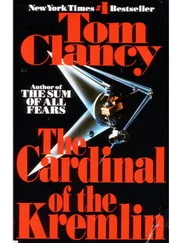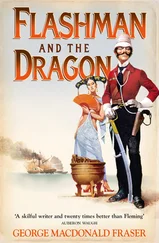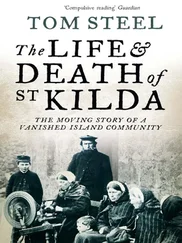Tom Clancy - The Bear and the Dragon
Здесь есть возможность читать онлайн «Tom Clancy - The Bear and the Dragon» весь текст электронной книги совершенно бесплатно (целиком полную версию без сокращений). В некоторых случаях можно слушать аудио, скачать через торрент в формате fb2 и присутствует краткое содержание. Год выпуска: 2001, ISBN: 2001, Жанр: Триллер, на английском языке. Описание произведения, (предисловие) а так же отзывы посетителей доступны на портале библиотеки ЛибКат.
- Название:The Bear and the Dragon
- Автор:
- Жанр:
- Год:2001
- ISBN:780425180969
- Рейтинг книги:3 / 5. Голосов: 1
-
Избранное:Добавить в избранное
- Отзывы:
-
Ваша оценка:
- 60
- 1
- 2
- 3
- 4
- 5
The Bear and the Dragon: краткое содержание, описание и аннотация
Предлагаем к чтению аннотацию, описание, краткое содержание или предисловие (зависит от того, что написал сам автор книги «The Bear and the Dragon»). Если вы не нашли необходимую информацию о книге — напишите в комментариях, мы постараемся отыскать её.
The Bear and the Dragon — читать онлайн бесплатно полную книгу (весь текст) целиком
Ниже представлен текст книги, разбитый по страницам. Система сохранения места последней прочитанной страницы, позволяет с удобством читать онлайн бесплатно книгу «The Bear and the Dragon», без необходимости каждый раз заново искать на чём Вы остановились. Поставьте закладку, и сможете в любой момент перейти на страницу, на которой закончили чтение.
Интервал:
Закладка:
The mission was to advance to contact, and to find a hole in the Chinese positions for the division to exploit. The secondary objective was to shoot through the gap and break into the Chinese logistical area, just over the river from where they’d made their breakthrough. There they would rape and pillage, as LTC Giusti thought of it, probably turning north to roll up the Chinese rear with one or two brigades, and probably leaving the third to remain in place astride the Chinese line of communications as a blocking force.
His troopers had all put on their “makeup,” as some called it, their camouflage paint, darkening the natural light spots of the face and lightening the dark ones. It had the overall effect of making them look like green and black space aliens. The advance would be mounted, for the most part, with the cavalry scouts mostly staying in their Bradleys and depending on the thermal-imaging viewers used by the driver and gunner to spot enemies. They’d be jumping out occasionally, though, and so everyone checked his PVS-11 personal night-vision system. Every trooper had three sets of fresh AA batteries that were as important as the magazines for their M16A2 rifles. Most of the men gobbled down an MRE ration and chased it with water, and often some aspirin or Tylenol to ward off minor aches and pains that might come from bumps or sprains. They all traded looks and jokes to lighten the stress of the night, plus the usual brave words meant as much for themselves as for others. Sergeants and junior officers reminded the men of their training, and told them to be confident in their abilities.
Then, on radioed command, the Bradleys started off, leading the heavier main-battle tanks off to the enemy, moving initially at about ten miles per hour.
The squadron’s helicopters were up, all sixteen of them, moving very cautiously because armor on a helicopter is about as valuable as a sheet of newspaper, and because someone on the ground only needed a thermal-imaging viewer to see them, and a heat-seeking missile would snuff them out of the sky. The enemy had light flak, too, and that was just as deadly.
The OH-58D Kiowa Warriors had good night-vision systems, and in training the flight crews had learned to be confident of them, but people didn’t often die in training. Knowing that there were people out there with live weapons and the orders to make use of them made everyone discount some of the lessons they’d learned. Getting shot down in one of those exercises meant being told over the radio to land, and maybe getting a tongue-lashing from the company commander for screwing up, which usually ended with a reminder that in real combat operations, he’d be dead, his wife a widow, and his children orphans. But they weren’t, really, and so those words were never taken as seriously as they were now. Now it could be real, and all of the flight crews had wives or sweethearts, and most of them had children as well.
And so they moved forward, using their own night-vision equipment to sweep the ground ahead, their hands a little more tingly than usual on the controls.
Division Headquarters had its own Dark Star terminal set up, with an Air Force captain running it. Diggs didn’t much like being so far in the rear with his men going out in harm’s way, but command wasn’t the same thing as leadership. He’d been told that years before at Fort Leavenworth’s Command and General Staff School, and he’d experienced it in Saudi Arabia only the previous year, but even so, he felt the need to be out forward, close to his men, so that he could share the danger with them. But the best way for him to mitigate the danger to them was to stay back here and establish effective control over operations, along with Colonel Masterman.
“Cookstoves?” Masterman asked.
“Yep,” the USAF captain-his name was Frank Williams-agreed. “And these bright ones are campfires. Cool night. Ground temperature’s about forty-three degrees, air temperature is forty-one. Good contrast for the thermal viewing systems. They seem to use the kind of stoves we had in the Boy Scouts. Damn, there’s a bunch of ’em. Like hundreds.”
“Got a hole in their lines?”
“Looks thin right here, ’tween these two hills. They have a company on this hilltop, and another company here-I bet they’re in different battalions,” Williams said. “Always seems to work that way. The gap between them looks like a little more ’n a kilometer, but there’s a little stream at the bottom.”
“Bradleys don’t mind getting a little wet,” Diggs told the junior officer. “Duke?”
“Best bet for a blow-through I’ve seen so far. Aim Angelo for it?”
Diggs thought about that. It meant committing his cavalry screen, and that also meant committing at least one of his brigades, but such decisions were what generals were for. “What else is around?”
“I’d say their regimental headquarters is right about here, judging by the tents and trucks. You’re going to want to hit it with artillery, I expect.”
“Right about the time QUARTER HORSE gets there. No sense alerting them too soon,” Masterman suggested. General Diggs thought it over one more time and made his first important decision of the night:
“Agreed. Duke, tell Giusti to head for that gap.”
“Yes, sir.” Colonel Masterman moved off toward the radios. They were doing this on the fly, which wasn’t exactly the way they preferred, but that was often the world of real-time combat operations.
“Roger,” Diggs called.
Colonel Roger Ardan was his divisional artillery commander-GUNFIGHTER Six on the divisional radio net-a tall thin man, rather like a not-tall-enough basketball player.
“Yes, sir.”
“Here’s your first fire mission. We’re going to shoot Angelo Giusti through this gap. Company of infantry here and here, and what appears to be a regimental command post here.”
“Enemy artillery?”
“Some one-twenty-twos here, and what looks like two-oh-threes, eight inch, right here.”
“No rocket-launchers?”
“None I’ve seen yet. That’s a little odd, but they’re not around that I can see,” Captain Williams told the gunner.
“What about radars?” Colonel Ardan asked.
“Maybe one here, but hard to tell. It’s under some camo nets.” Williams selected the image with his mouse and expanded it.
“We’ll take that one on general principles. Put a pin in it,” Ardan said.
“Yes, sir. Print up a target list?”
“You bet, son.”
“Here you go,” Williams said. A command generated two sheets of paper out of the adjacent printer, with latitude-longitude positions down to the second of angle. The captain handed it across.
“How the hell did we ever survive without GPS and overheads?” Ardan wondered aloud. “Okay, General, this we can do. When?”
“Call it thirty minutes.”
“We’ll be ready,” GUNFIGHTER promised. “I’ll TOT the regimental command post.”
“Sounds good to me,” Diggs observed.
First Armored had a beefed-up artillery brigade. The second and the third battalions of the First Field Artillery Regiment had the new Paladin self-propelled 155-mm howitzer, and the 2nd Battalion, 6th Field Artillery, had self-propelled eight-inch, plus the division’s Multiple Launch Rocket System tracks, which ordinarily were under the direct order of the divisional commander, as his personal shotgun. These units were six miles behind the leading cavalry troops, and on order left the roads they were on and pulled off to firing positions north and south of the gravel track. Each of them had a Global Positioning Satellite, or GPS, receiver, and these told them where they were located down to an accuracy of less than three meters. A transmission over the Joint Tactical Information Distribution System, or J-TIDS, told them the locations of their targets, and onboard computers computed azimuth and range to them. Then they learned the shell selection, either “common” high-explosive or VT (for variable-time). These were loaded and the guns trained onto the distant targets, and the gunners just waited for the word to pull the strings. Their readiness was radioed back to the divisional HQ.
Читать дальшеИнтервал:
Закладка:
Похожие книги на «The Bear and the Dragon»
Представляем Вашему вниманию похожие книги на «The Bear and the Dragon» списком для выбора. Мы отобрали схожую по названию и смыслу литературу в надежде предоставить читателям больше вариантов отыскать новые, интересные, ещё непрочитанные произведения.
Обсуждение, отзывы о книге «The Bear and the Dragon» и просто собственные мнения читателей. Оставьте ваши комментарии, напишите, что Вы думаете о произведении, его смысле или главных героях. Укажите что конкретно понравилось, а что нет, и почему Вы так считаете.






![Александр Ирвин - Tom Clancy’s The Division 2. Фальшивый рассвет [litres]](/books/417744/aleksandr-irvin-tom-clancy-s-the-division-2-falsh-thumb.webp)




